
An Indian rocket launch, red sprites over New Zealand, and JWST's stunning anniversary image.
Monday, 17 July 2023
Charon from New Horizons
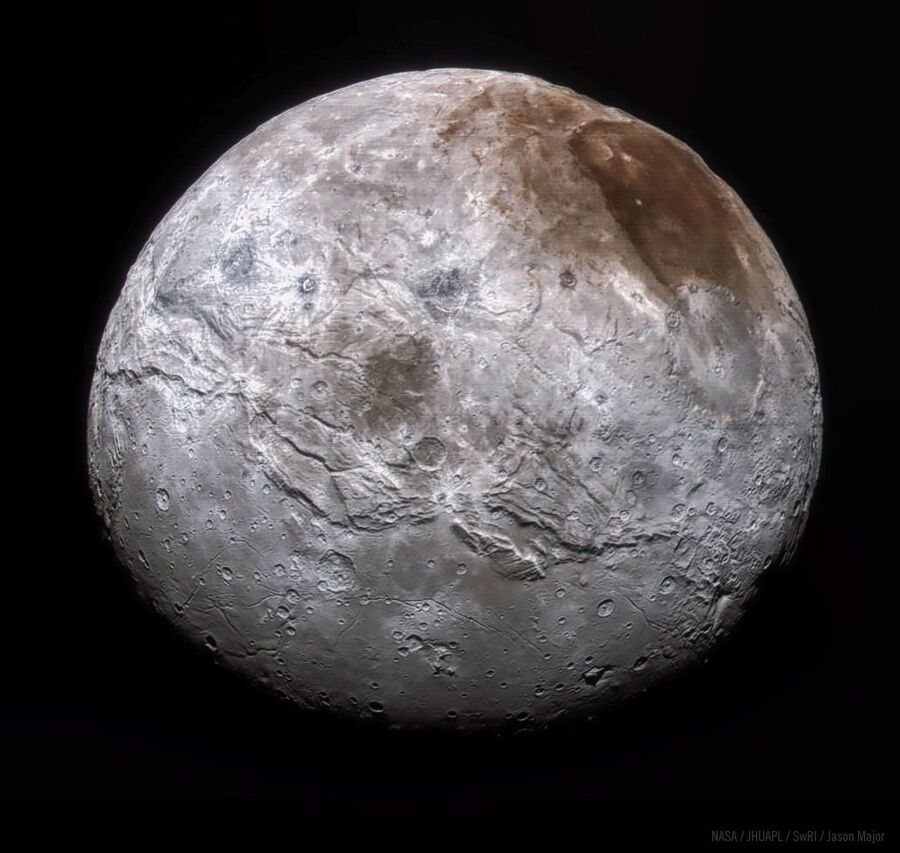
Expanded-color image of Pluto's largest moon Charon as imaged by NASA's New Horizons spacecraft in red, blue, and infrared wavelengths on July 14, 2015.
Credit: NASA/JHUAPL/SwRI/Jason Major
Tuesday, 18 July 2023
Martian Wallpaper
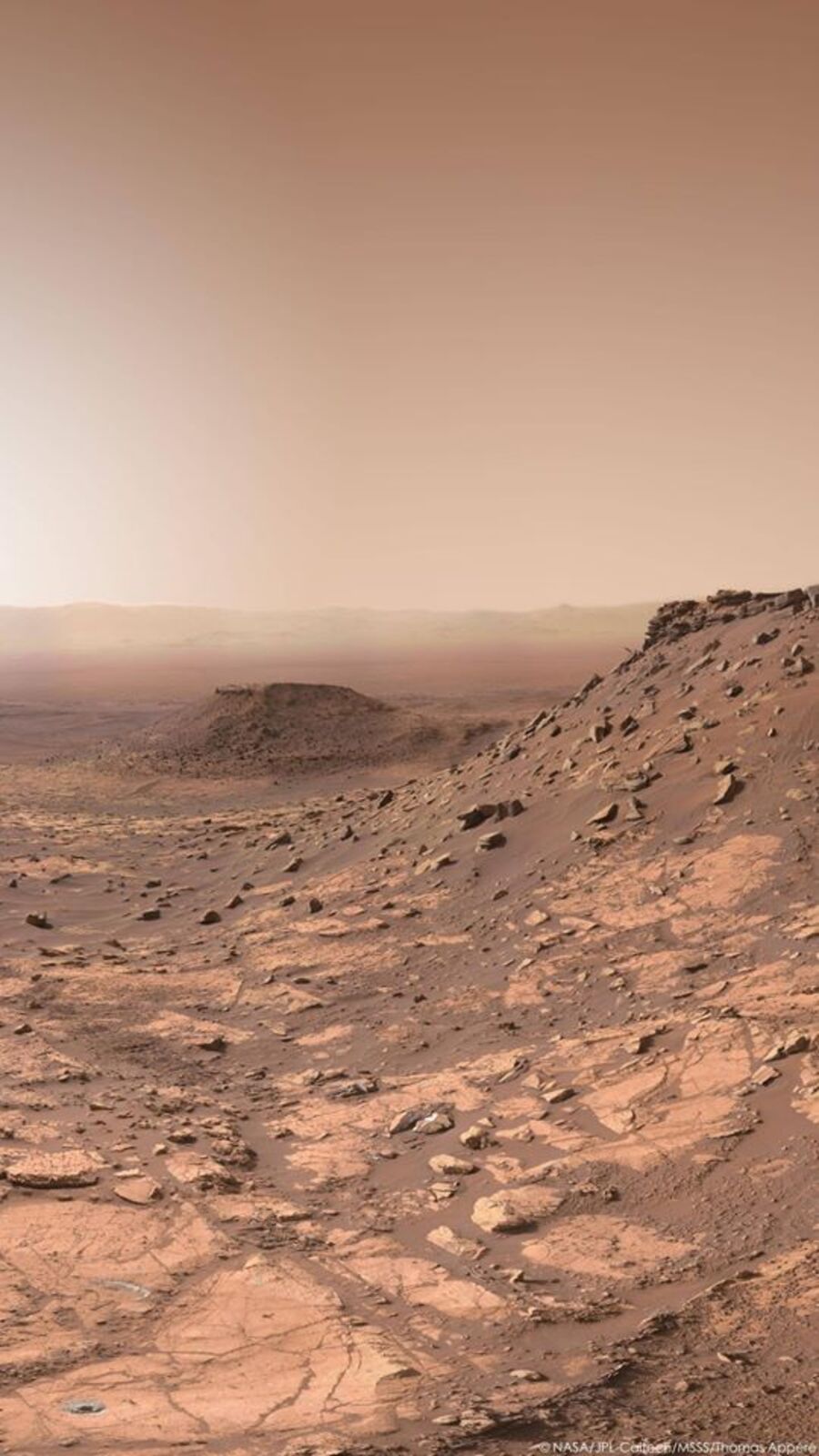
Enjoy NASA's Curiosity rover's view of Gale crater about two years ago. This site has such incredibly beautiful landscapes, but we've gone portrait mode for this one. Notice the rim of the crater in the background. The colors in this image are natural.
Credit: NASA/JPL-Caltech/MSSS/Thomas Appéré
Wednesday, 19 July 2023
ISRO Launches Chandrayaan-3
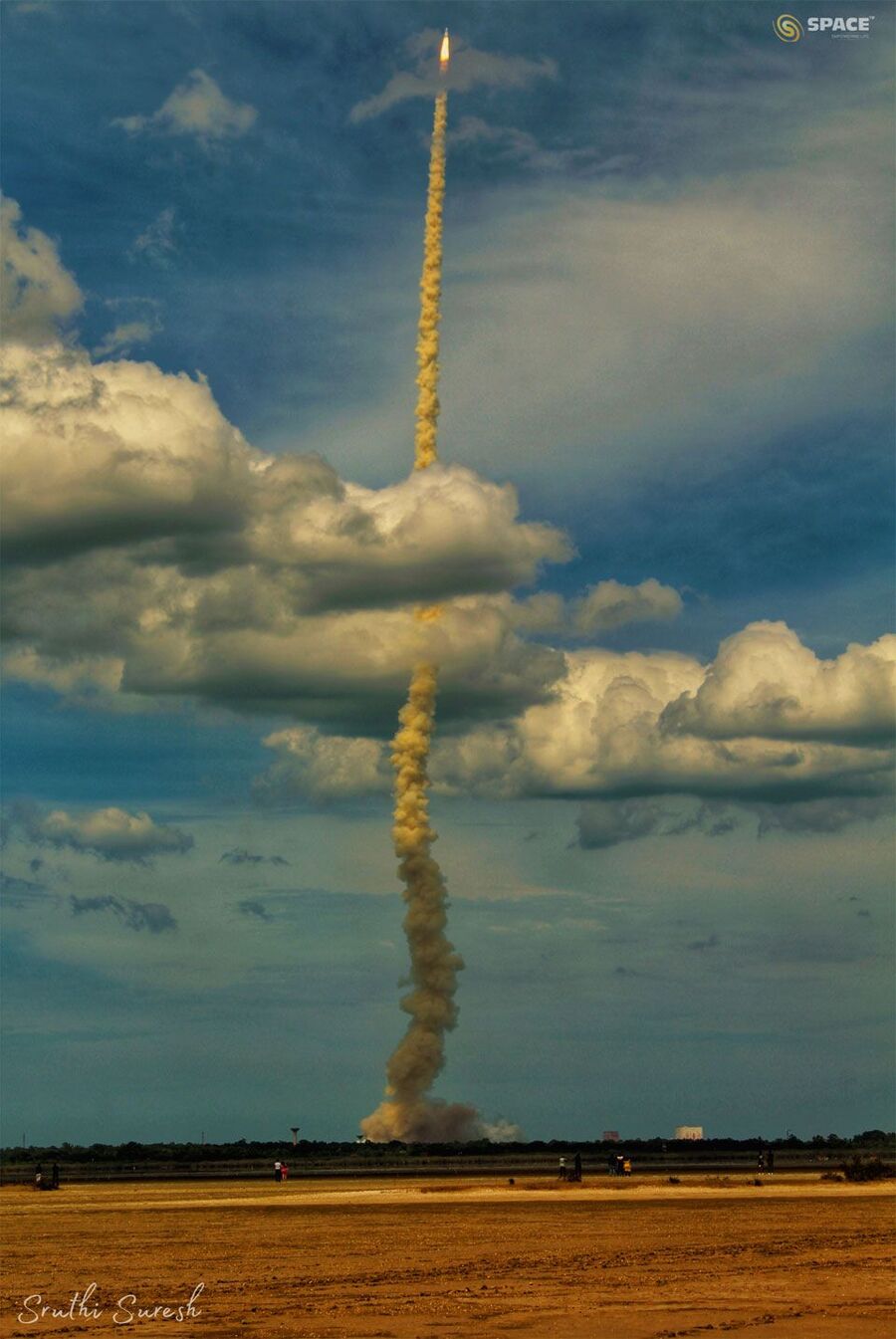
On 14 July 2023 at 9:05 UTC, the Indian Space Research Organisation (ISRO) launched their latest mission to the Moon - Chandrayaan-3 - from the Satish Dhawan Space Centre. Consisting of a lunar lander named Vikram and a rover named Pragyan, this mission seeks to successfully land near the lunar south pole and conduct various in situ experiments. The landing is currently scheduled for 23 August.
Credit: Sruthi Suresh, Space Group
Thursday, 20 July 2023
Rho Ophiuchi
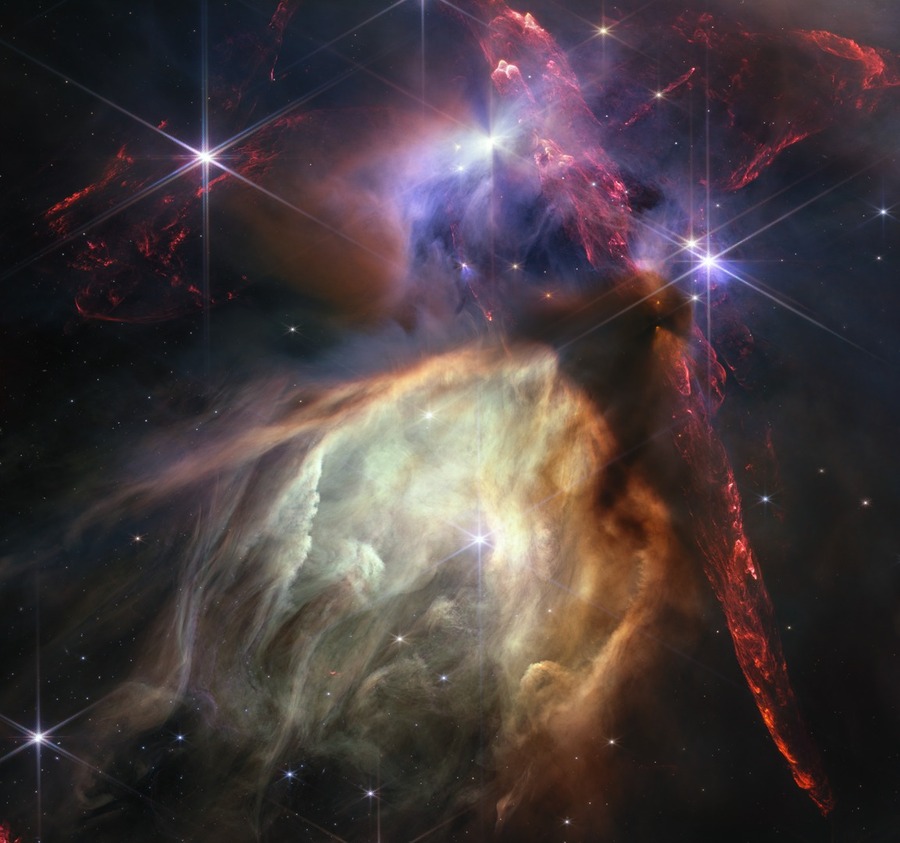
The first anniversary image from NASA’s James Webb Space Telescope displays star birth like it’s never been seen before, full of detailed, impressionistic texture. The subject is the Rho Ophiuchi cloud complex, the closest star-forming region to Earth. It is a relatively small, quiet stellar nursery, but you’d never know it from Webb’s chaotic close-up. Jets bursting from young stars crisscross the image, impacting the surrounding interstellar gas and lighting up molecular hydrogen, shown in red. Some stars display the telltale shadow of a circumstellar disk, the makings of future planetary systems.
The young stars at the center of many of these disks are similar in mass to the Sun, or smaller. The heftiest in this image is the star S1, which appears amid a glowing cave it is carving out with its stellar winds in the lower half of the image. The lighter-colored gas surrounding S1 consists of polycyclic aromatic hydrocarbons, a family of carbon-based molecules that are among the most common compounds found in space.
Credit: NASA, ESA, CSA, STScI, Klaus Pontoppidan (STScI); Processing: Alyssa Pagan (STScI)
Friday, 21 July 2023
Red Sprites over New Zealand
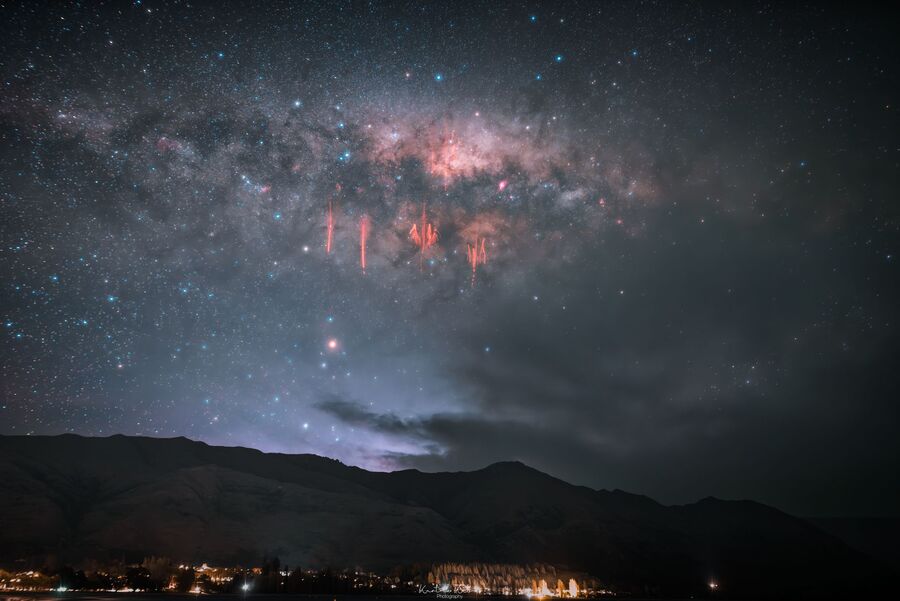
Description from photographer Kartik Kota: "I went out at 3 am while in Wanaka to try and photograph the milky way arch over Lake Wanaka. Checked on Photopills and it looked feasible. What I did not take into account was the amount of light pollution around at the waterfront. So I thought might as well try and get some Milky Way core imaging done while I am there.
"There were occasional flashes of light behind the mountain and I was not sure if that was lightning. I could see clouds rolling in from the right though so I quickly set up the tripod and camera and was minding my own business trying to frame a decent shot.
"The first image I took I saw these red streaks across the image right in front of the Milky Way core! I have never felt such an adrenaline rush because I immediately knew these were Lightning Sprites or Red Sprites. These are large scale electrical discharges that happen in the Mesosphere high above thunderstorm clouds, usually at an altitude of 50-90 km. They are usually triggered by lightning discharge between a cloud and ground. You can see a bit of white light just behind the mountain, possibly a flash of thunder.
"I have seen a few images of sprites before but never imagined that I would capture them. And that too in front of the Milky Way core!"
Credit: Kartik Kota





